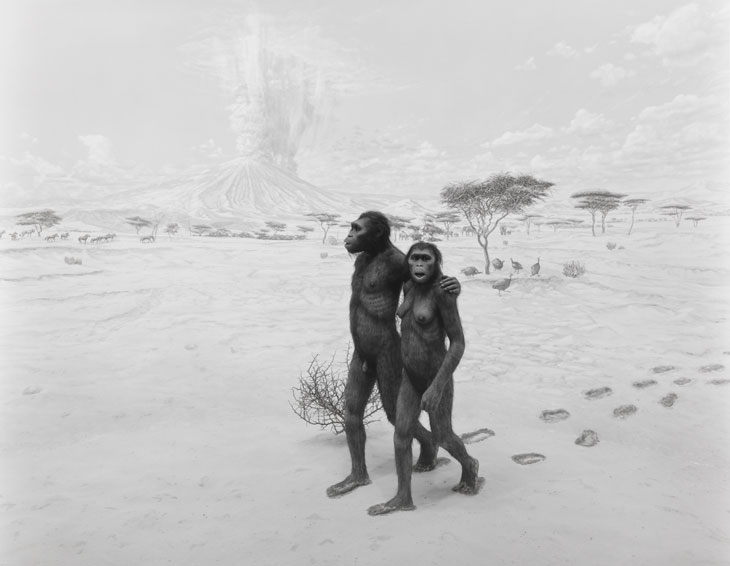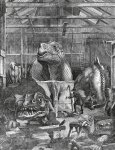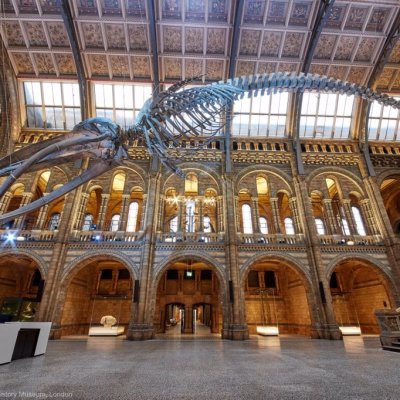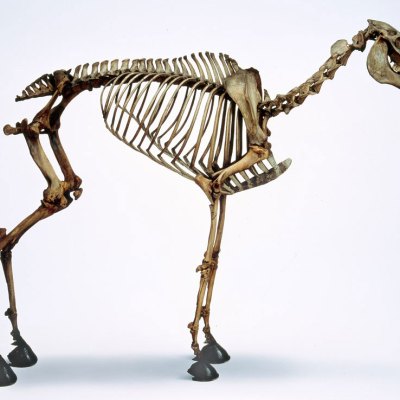What child is not obsessed with dinosaurs, at least for a while? For me the years of dragging my long-suffering parents around the dinosaur galleries at London’s Natural History Museum came just before my (also common) obsessions with the ancient Egyptians and then astronomy. Yet, while a broad fascination with all three of these areas remains, it is dinosaurs that still bring out in me a childlike sense of awe.
That I am not alone in this was demonstrated by the storm of protest that met the Natural History Museum’s decision to remove ‘Dippy’ the diplodocus from his 38-year post in the central Hintze Hall. The change has been made due to the laudable wish on the NHM’s part to remind its audiences of the wonderful creatures of today, rather than the extinct monsters of the past, hopefully engendering a generation of climate warriors. Thus, ‘Hope’ the blue whale now dives dramatically overhead.
Twitter/@NHM_London
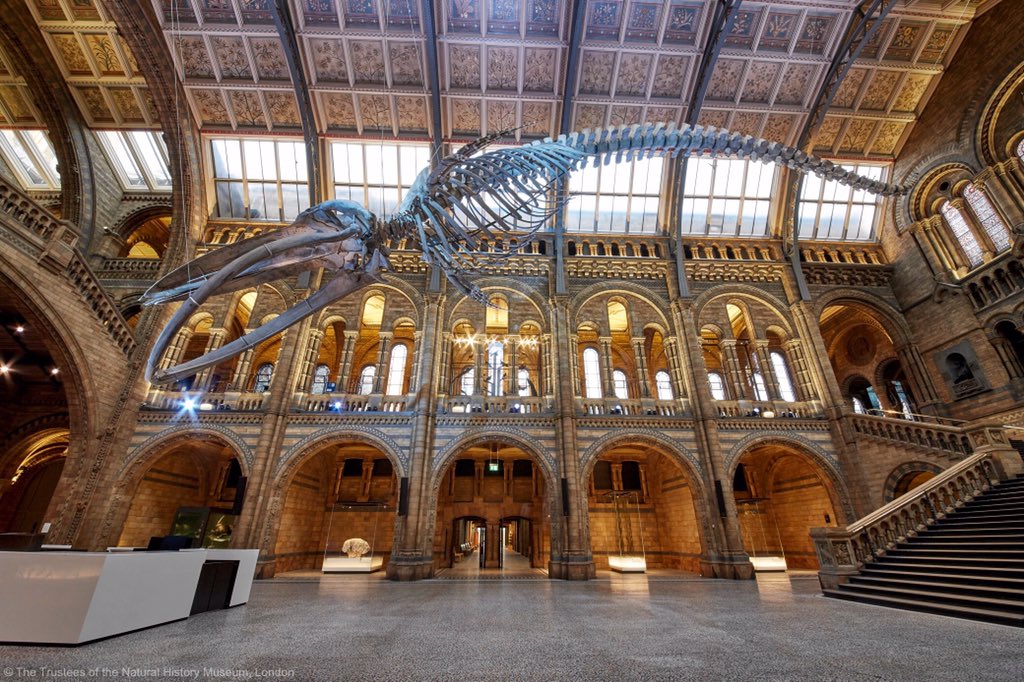
It is disingenuous, however, to suggest that the dinosaurs in our museums are simple representatives of a bygone era, and not the careful assemblages of scientists, fossil preparators and, perhaps above all, artists. ‘Dippy’ himself is a plaster cast made from an original held at the Carnegie Museum of Natural History. He has been re-mounted many times and he is as representative of the human ambitions and concerns of the last 200 years, as ‘Hope’ may be of the next. Two separate events this summer have helped to illustrate this fact, that nature as presented in museums has always been a human construct. Taschen have published a beautiful and monumental work by writer Zoë Lescaze and artist Walton Ford on Paleoart: Visions of the Prehistoric Past; and the Palais de Tokyo in Paris has hosted a ground-breaking show on ‘Dioramas’ (until 10 September), looking at the history of these compelling displays used to teach museum visitors about the natural world.
Paleoart: Visions of the Prehistoric Past by Zoë Lescaze and Walton Ford, is published by Taschen
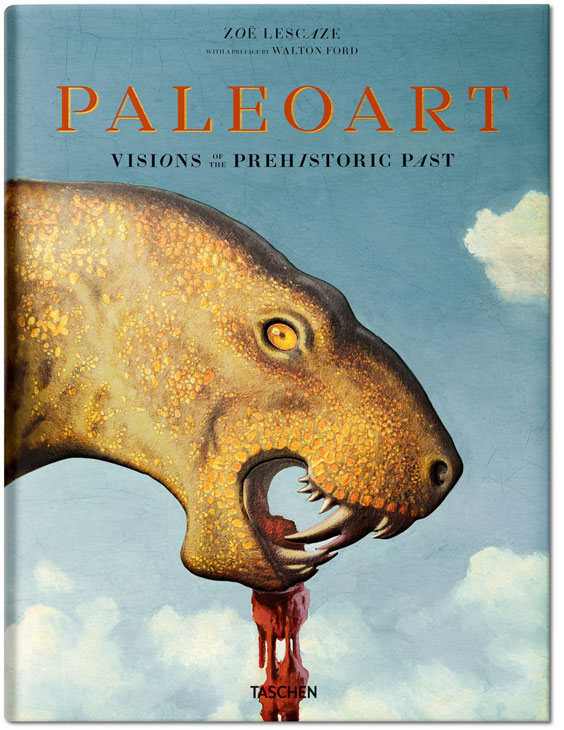
Their stories begin only eight years apart. In 1822, Louis-Jacques-Mandé Daguerre opened the first diorama in Paris with the painter Charles Marie Bouton. Seventeen years before he would perfect the daguerreotype photography process, he produced what is now seen as a proto-cinema in which lights played behind a semi-transparent painted canvas to create a series of atmospheric effects. Across the channel, in 1830, Henry de la Beche created the first piece of paleoart, adding imagination to fossil evidence to create a writhing watercolour vision of a prehistoric world, and raising money for the impoverished fossil collector Mary Anning in the process. Over the decades, both genres would develop into crucial tools of natural history museums, advancing in step with scientific breakthroughs, but also reflecting the wider priorities of the societies that made and enjoyed them.
Take, for example, the case of Benjamin Waterhouse Hawkins, creator of the galumphing, much-loved dinosaurs at London’s Crystal Palace, which are currently undergoing much-needed conservation. Produced just after the Great Exhibition, Hawkins’ models were inspired by sometimes very sparse fossil evidence, and in support of Richard Owens’ (the first director of the British Museum (Natural History) as it then was) anti-evolution theories. At the time, they were ground-breaking, both artistically and scientifically: they now appear as fossils in more ways than one.
Hawkins’ embattled career later took him to New York as the craze for fossil-hunting, paleoart and grand natural history displays in museums took hold in the young United States. Increased understanding of the distant past and, critically of a mass extinction of life on Earth, combined with a period of rapid technological change, made it possible, arguably for the first time, to imagine a markedly different human future. Representations and reconstructions of the natural world reflected visions of conflict, fear or peaceful existence, as empires expanded and wars were fought across the world.
Tyrannosaurus and Edmontosaurus (c. 1976), Ely Kish. © Ely Kish. Photo © Canadian Museum of Nature
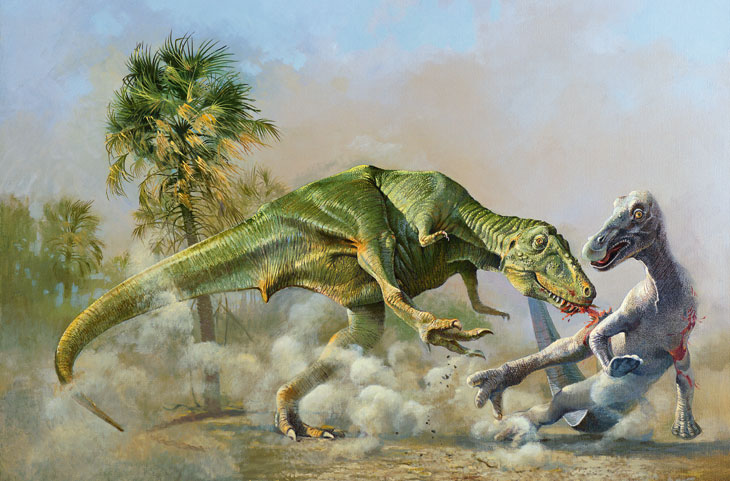
By the turn of the 20th century, ‘modern’ dioramas which combine painted backdrops, models and taxidermy, were beginning to take hold. Among the most celebrated of these is the set created by Carl Akeley in the Hall of African Mammals at the American Museum of Natural History in 1909 (also recently refurbished). Akeley’s designs frame nature behind a glass window: vistas are created with carefully-curved painted backdrops; taxidermy animals are posed in acts of conflict or familial care that are eminently human. They appear like snapshots but are more properly stage shows.
The etymology of diorama, we must remember, is ‘to see through’ and this is what the Palais de Tokyo exhibition reminds us to do through a series of contemporary works. Hiroshi Sugimoto’s haunting photographs of dioramas (inspired by and including Akeley’s) remove all signs of glass or frames to present an even more uneasy combination of ‘real’ nature and human artifice. A special commission by Mark Dion makes a modern-day diorama of urban nature where crows, rats and foxes forage in a huge pile of rubbish. Dulce Pinzón’s photo Nostalgia places an engrossed kissing couple inside a vividly-lit diorama, while bewildered animals watch from beyond the barrier, carefully balanced on their pinned, taxidermied hooves.
Paris Streetscape (2017), Mark Dion. Courtesy Mark Dion / Galerie in Situ – Fabienne Leclerc, Paris. Photo: Aurélien Mole
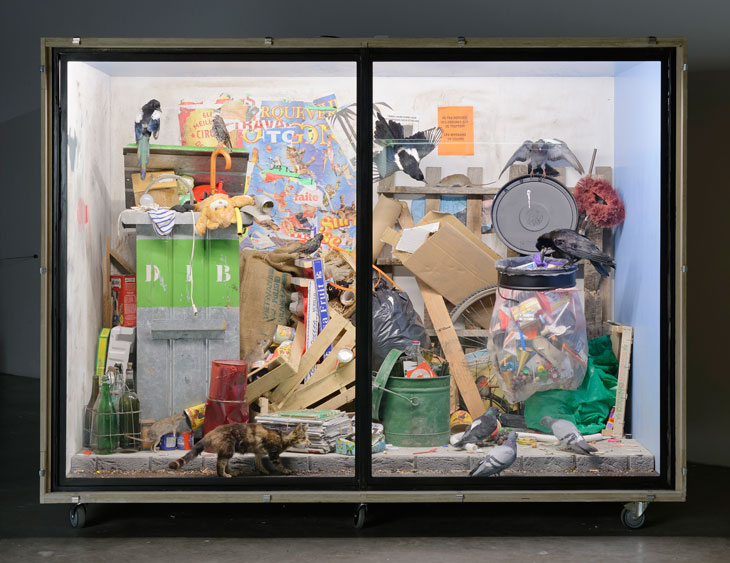
There’s a hint of science fiction about all of these works – both the dioramas and the paleoart – in which a fearful vision of mankind’s future on earth is mixed with awe of the natural world and the prehistoric past. But there’s also a joy in materiality and physical presence, in summoning extinct or distant animals vividly to life before our eyes. Even the book Paleoart itself is beautifully bound in leather that resembles dinosaur hide, and imprinted with that most unsettling of dinosaur movie symbols – a footprint.
Thus, these presentations of dinosaurs and animals are really human self-portraits, grappling with our ever-present fear of mortality and our changing sense of power over but also fragility within the natural world. Reflecting their concerns for the next generation of museum-goers the staff of the NHM have named their whale ‘Hope’. But it was visitors who, by adopting it over the decades, decided Dippy’s affectionate nickname. It will be in Hope’s eventual nickname that we will see if her message has been taken to visitors’ hearts as much as the dinosaurs of paleoart and dioramas have delighted audiences since the early 19th century.
Paleoart: Visions of the Prehistoric Past, by Zoë Lescaze and Walton Ford, is published by Taschen.
‘Dioramas’ is at the Palais de Tokyo, Paris, until 10 September, and subsequently tours to the Schirn Kunsthalle, Frankfurt, from 6 October 2017–21 January 2018.
Earliest Human Relatives (1994), Hiroshi Sugimoto. © The artist, Courtesy Sugimoto Studio
